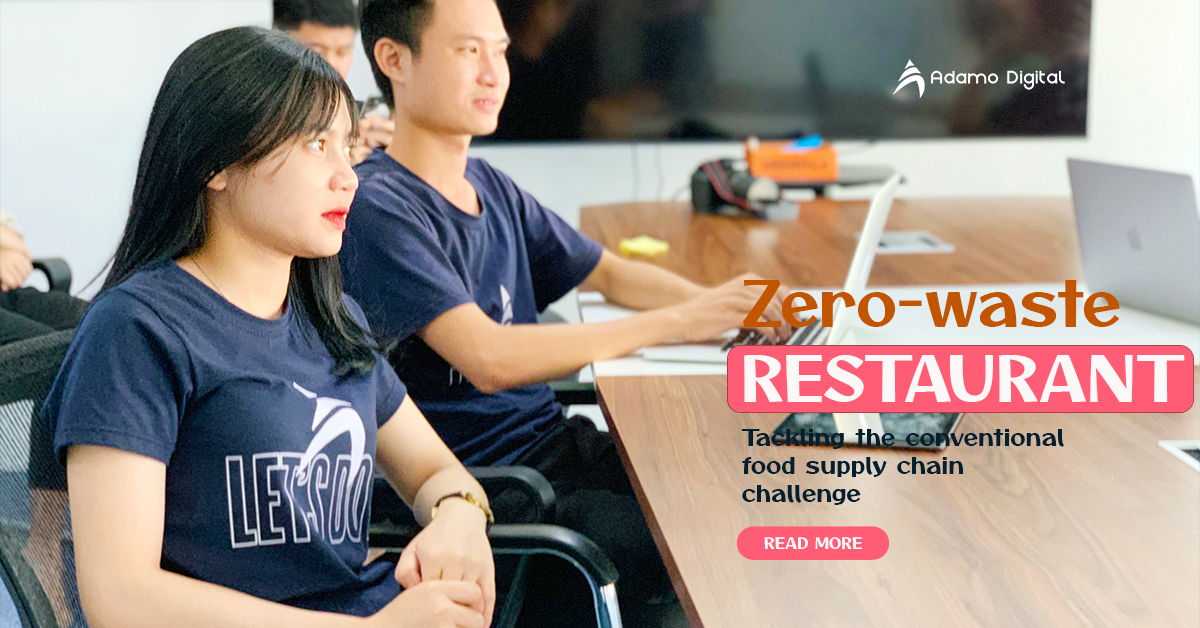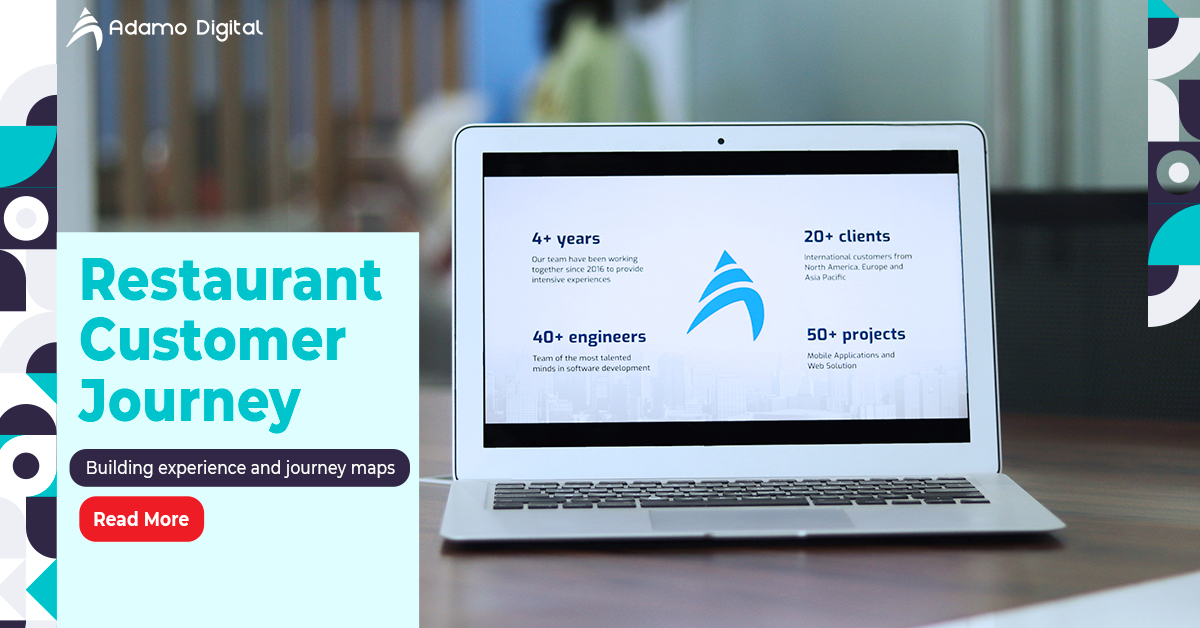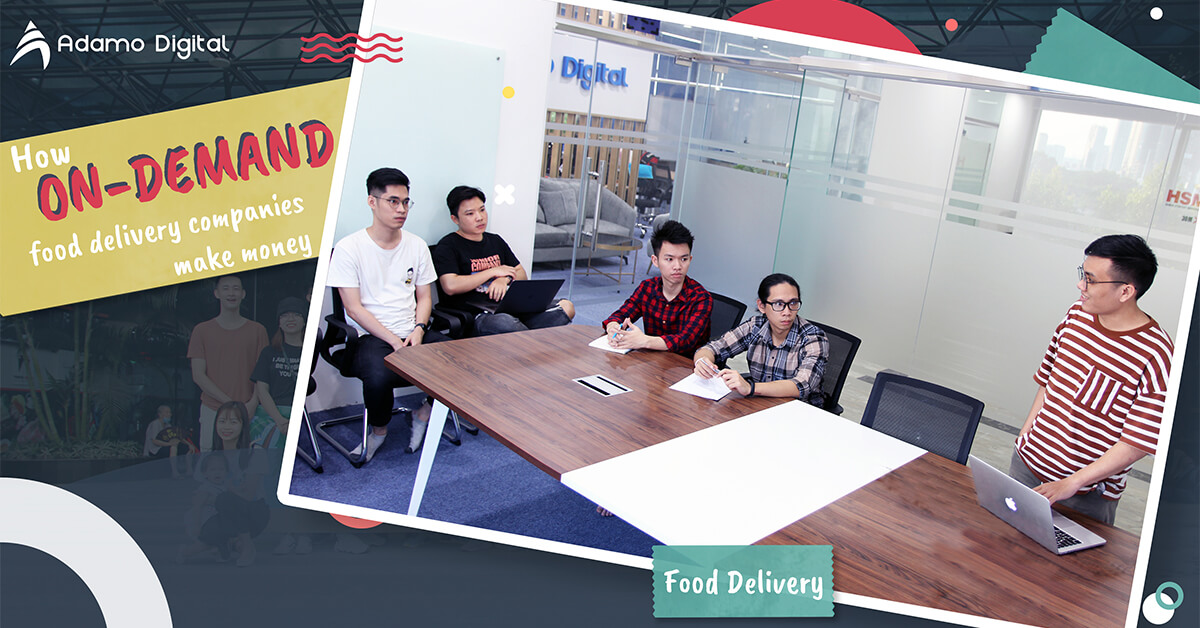Cloud kitchen concept: future of on demand food delivery
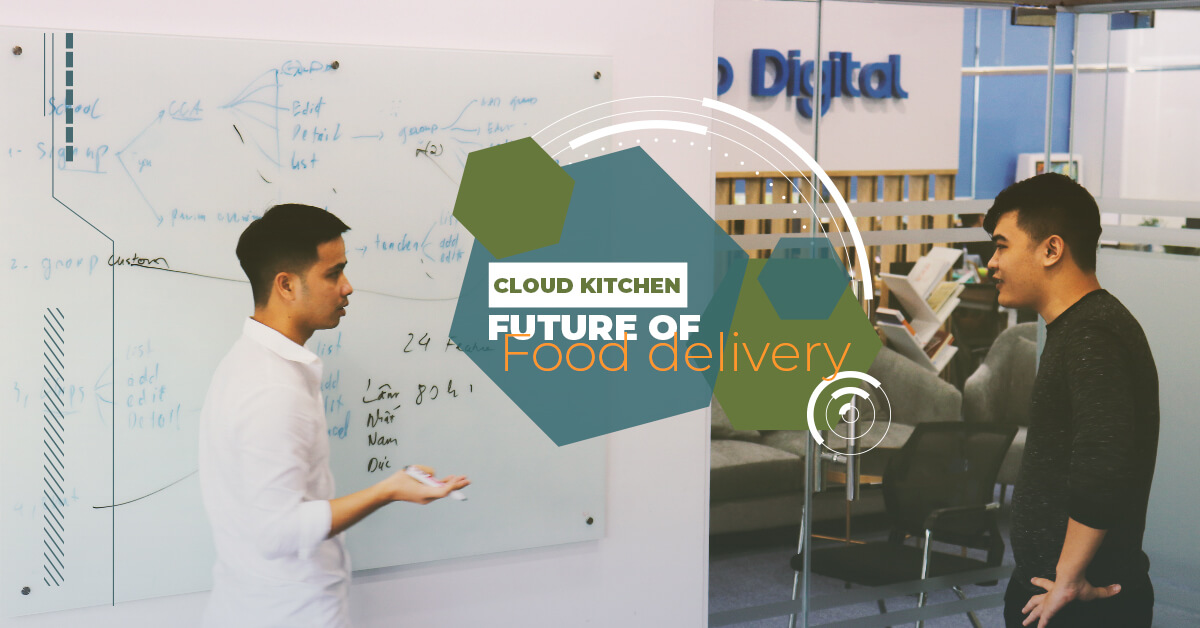
Cloud kitchen concept has increased regularly these days due to the changes in consumption behaviors in favor of the online food delivery market.
Obviously, online food delivery has thoroughly reshaped the food and beverage market since it changes the purchasing behavior of customers. In the past 5 years, it was the glory time of physical food stores, while most diners choose to eat-in to enjoy services within the restaurants. However, with the growth of food and beverage software, that habit is seemingly changed.
In 2019, the global cloud kitchens valuation accounted for US$ 43.1 billion in size, which is estimated to reach an increase of 12% annually. Predictably, the cloud kitchen market would reach over US$ 70 billion in 2025, which could seemingly dominate North America and Europe areas. Experts propose that the significant rise of cloud kitchens coming from the motivation of on-demand food delivery and tech-savvy adoption in the market of on demand food ordering systems.
What is cloud kitchen concept?
Cloud kitchens are delivery-only restaurants lacking customer dining areas and a physical storefront. Therefore, they operate out of sight and behind the scenes. Before the pandemic, cloud kitchens were gaining popularity and attracting massive investment. With an annual growth rate of 13.78%, the cloud kitchen concept has become more established as a result of restrictions that have benefited the model.
Customers place orders through food delivery applications (such as Grubhub, Doordash, etc.) or directly through the restaurant’s app, website, or phone number. The food is prepared in production kitchens (also known as cloud kitchens), from which drivers retrieve it and transport it to customers.
The model permits one or more virtual restaurants to operate from a delivery-optimized kitchen without the costs associated with a dining room or front-of-house personnel.
According to Statisca’s most recent forecast, the total market size will double between 2021 and 2027, reaching $112.53 billion. Even more optimistically, Euromonitor predicts that the market will reach $1 trillion by 2030, aided by cheaper, more dependable delivery and the elimination of significant portions of the drive-thru and other takeaway segments.
In 2022, MrBeast Burger, a virtual restaurant brand, generated $100 million in revenue, demonstrating the cloud kitchen concept’s extraordinary potential.
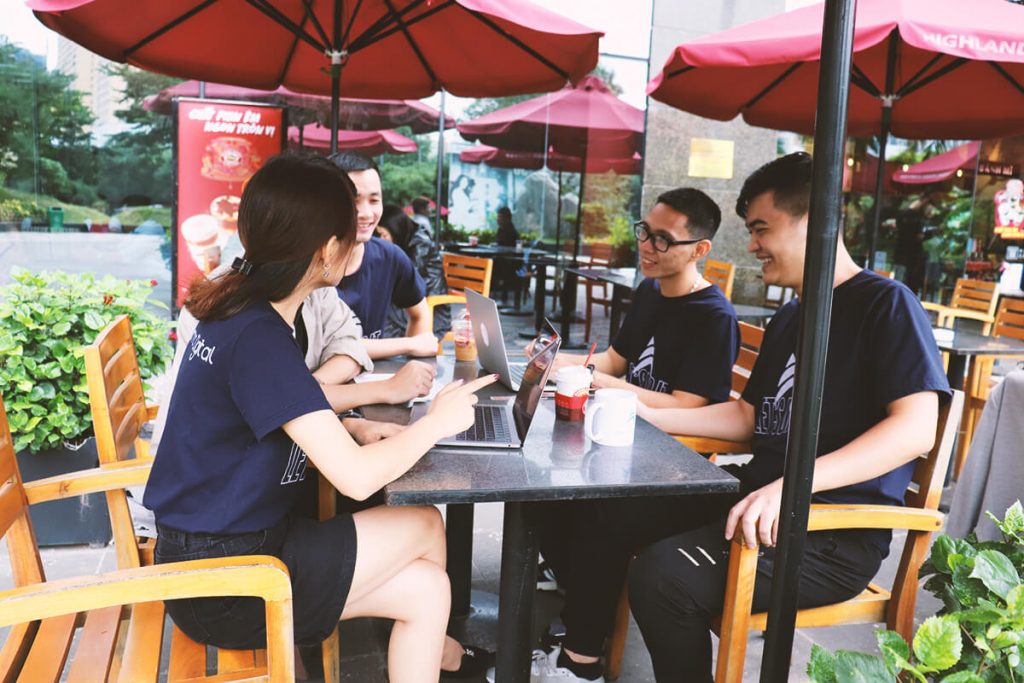
Generally, the concept of cloud kitchen was claimed for food delivery only. With no eat-in services, the cloud kitchen tends to be a unique type of virtual restaurant. As a product of technology innovation, each virtual restaurant needs cloud kitchen software in delivering its services. In practice, the cloud kitchen software could connect three key objects, including food providers, shippers (delivery services), and customers. Accordingly, it keeps the process gone smoothly.
Since the cloud kitchen concept has only kitchen space for preparing food without any brick-and-mortar areas, all the orders would come to the delivery process. Most cloud kitchen businesses work with on-demand delivery platforms to distribute their products. Alternatively, they could have their own delivery team to handle orders.
In fact, the concept of cloud kitchen requires few capitals to set up rather than physical stores. Evidently, owners could save up to 90% cost when running a virtual restaurant instead of offering eat-in areas. Currently, you can find five popular models of cloud kitchen in the market.
Also read: What function should a Self-service Ordering Kiosk have?
1. Cloud kitchen as the concept of ghost restaurant
A genuine cloud kitchen run with delivery services only that it does not provide any food truck or pick-up location. The ghost restaurant refers to the fundamental concept in the cloud kitchen business model. Each ghost restaurant operates as an independent cloud kitchen, which is claimed as a single brand, covering a single kitchen only.
In practice, ghost restaurants have their own commercial kitchen space, staff, facilities, and other operational needs to perform a restaurant. Running as a particular brand, a ghost kitchen is known as a single business, following a typical menu and cuisine styles.
2. Shared cloud kitchen
With a shared cloud kitchen, several brands are settled in a single space, which serves multiple cuisines. In which, there will be a business building a kitchen space that many brands can rent a part of this kitchen for operation. In other words, shared cloud kitchen work in a similar model with co-working space, where food producers have their own corner in a large kitchen.
Accordingly, running a shared cloud kitchen is more economical, that it helps to reduce the rental fee and part of the facility cost, which could be provided by the landlord. Moreover, the space provider also offers additional services like cleaning, equipment maintenance, security, etc. The shared kitchen space is proved to keep the operation cost low while ensuring the diversity of cuisine styles. Like ghost restaurant, shared cloud kitchen offer delivery only
3. Hybrid cloud kitchen concept
The concept of a hybrid cloud kitchen is seemingly combining with a physical store and ghost kitchen that it offers both takes away and delivery. In which it has a storefront for food pick up where customers could see what happens in the kitchen and how their orders are prepared. The hybrid cloud kitchen obviously required higher capital for the operation than the above models. In exchange, this model supports a better relationship with customers, which adds clearer and more trust in the brand.
4. Aggregator cloud kitchen
This type of cloud kitchen concept is owned by delivery services, which have an online ordering system and delivery infrastructure to handle orders. Whereby they partner up with multiple restaurant brands in a co-working kitchen to provide multiple cuisine styles. Alternatively, the delivery services could also build their own kitchen. Then the aggregator cloud kitchen becomes a full-stack cloud kitchen. Depending on the model of aggregator, this type could have a storefront or not.
With the aggregator cloud kitchen, the kitchens are only responsible for food preparation. All other tasks, such as attracting customers, handle orders, and delivery is belonging to aggregators.
5. Full-outsourced cloud kitchen
The full-outsource cloud kitchen concept is not a real kitchen, acting like an agent, who collects the orders from customers then distributes them to other kitchens. When the kitchen completes the order preparation, the full-outsource cloud kitchen will pick it up then handover to delivery services. Instead of investing in kitchen operation, full-outsource cloud kitchen would spend money on developing on demand food ordering systems, which allow customers to place an order.
Most of the food preparation is outsourced, that the brand could save the majority cost for kitchen operation, staff, and equipment. In which no physical location, chefs, and storefront are required.
| Model | Order source | Space | Selling channel |
| Ghost kitchen | Online sources | Separated Kitchen | Delivery only |
| Shared cloud kitchen | Online sources | Co-working kitchens | Delivery only |
| Hybrid cloud kitchen | Online sources | Separated kitchen | Delivery and take away |
| Aggregator cloud kitchen | From owner delivery app | Co-working kitchens | Delivery and (optional) take away |
| Full-outsource cloud kitchen | All source | Third-party kitchen | Pick-up for delivery services |
Benefits of cloud kitchens for the food business transformation
Reduced investment costs
A cloud kitchen concept dispenses with the need for a front, which eliminates the need for expensive decor, dinnerware, signage, or location. If you desire to lease a kitchen from virtual kitchen providers, there are no obligations for construction, inspections, or zoning compliances, which reduces your startup expenses. As a consequence, you can be operational within a few weeks.
Lower operating costs and higher profit margins
Cloud kitchen concept does not have to deal with high administrative expenses, such as labor costs of the service staff, expensive utilities, and exorbitant property taxes – something that cloud kitchens don’t need to deal with. Instead, these kitchens rely on limited on-demand labor with a chef or two, thereby improving profitability margins.
Further savings in the form of scale advantages can be made if the kitchen services multiple delivery-only brands that use similar ingredients.
Allow for increased flexibility in menu customization
A web/app-based ordering system in the cloud kitchen concept allows for greater menu customization flexibility, and dish pricing can be readily adjusted in response to customer feedback without incurring printing menu costs. Additionally, this reduces food waste.
Enhanced productivity by streamlining all processes
Since the cloud kitchen concept is engaged in the entire customer journey, from order placement to fulfillment, they have access to a wealth of customer data that can be used to optimize all processes. For example orders, delivery times, and staff scheduling, thereby increasing efficiency. This becomes even more crucial if multiple brands are produced in the same facility.
Digital brand recognition without hefty marketing spend
Since the cloud kitchen concept advertises via social media or delivery apps with which they have partnerships, they can reach a larger audience without the need for limited marketing channels.
Disadvantages of cloud kitchen to consider
Limited brand recognition
Without a physical presence, it can be difficult for virtual restaurants to gain brand recognition. Daily walk-in traffic draws attention to physical restaurants, whereas a virtual brand must work harder to gain visibility online.
Without a recognized brand, it is difficult to develop customer loyalty, so virtual restaurants must make every effort to establish a digital brand. Online brand development and visibility can be achieved through online advertising and social media marketing.
Absence of direct customer interaction
Without a brick-and-mortar location, restaurants operating out of phantom kitchens lack the human interaction that so many dinners crave.
Being a restaurant regular and receiving a warm welcome is a major reason why people turn to their favored spots repeatedly.
In addition, the cloud kitchen concept lacks direct customer feedback that helps them enhance their food and service. Virtual brands must rely on online evaluations that are not always the most constructive.
Employ staff on demand
To control margins, you may be more inclined to employ staff on demand if you operate a cloud kitchen concept. Although this can reduce your compensation expenses, there are a few caveats. Since staff will not interact with visitors or receive gratuities, it may feel more like a factory job than a hospitality job.
Of course, you can attempt to boost morale and motivate employees in other ways. However, it may be more challenging to build a brand culture if you fail to attract the most qualified food service professionals.
Food safety and consistency, both of which are crucial to the success of food enterprises, are also jeopardized by on-demand staffing. Can you guarantee that these employees have adequate training? There is a trade-off here, and you will need to determine the optimal balance between contingent laborers and permanent employees.
An excessive dependence on third-party delivery apps
Despite the advantages of using delivery applications, it is never a wise business decision to rely on a single customer source. In addition, eating into your profit margins, the high fees and lack of control over last-mile delivery can compromise the food’s quality and put your business’s reputation at risk.
Offering your delivery service is one way to combat this, but doing so incurs higher marketing costs and logistical complications. In large communal kitchens where multiple brands can share the load, it may make sense.
Highly competitive in a crowded digital marketplace
Since the cloud kitchen concept lacks a physical location, they do not benefit from walk-in traffic. You are exclusively competing in a congested online marketplace. The good news is that if your product is sufficiently superior, social substantiation such as positive reviews and word-of-mouth recommendations should propel it to the top.
However, you may be required to pay for visibility on these platforms. Ultimately, this is how they make their money. You should be aware of this potential additional expense, particularly in the beginning, before you can develop your loyal following.
As the prevalence of cloud kitchen concepts continues to increase, the market may become oversaturated, making it more difficult for new businesses to distinguish themselves and succeed.
High standards for food quality and safety
With a delivery-only brand, your reputation is contingent upon the food reaching the consumer in pristine condition. This is the only method to guarantee repeat business. Keeping the product at the correct temperature to ensure it reaches the consumer in the intended condition is fraught with difficulty. Not only at the ideal temperature for optimal enjoyment but also to assure food safety.
This requires testing various packaging types and possibly investing in containers that are more costly and difficult to source. This is a cost that can rapidly add up when you have a high order volume, but it is a crucial factor to consider. Food that is soggy and lukewarm will guarantee failure. And one foodborne ailment or outbreak is enough to destroy your brand.
How cloud kitchen concept works
The concept of cloud kitchen is seemingly flexible and vary depending on the scale and scope of the business. In fact, one business act like a roof, running multiple virtual restaurants and brands in one typical space for cost optimization. On the other hand, many separated cloud kitchen brands can share the same facility. Whatever the scale, they do follow a similar process in offering their services.
Indeed, the online ordering system tends to be the central market place attracting customers to visit virtual restaurants for food ordering. Those would be collected, processed, and sent to the cloud kitchen software operated by the restaurant staff for distribution in specific brands. Then, food preparation begins within the brand. After finishing, the delivery process would pick up the order for shipping to the place assigned by customers.

Accordingly, as the cloud kitchen concept is a virtual kitchen performing fully on the cloud, it requires technology, especially web and mobile app solution in handling the whole process. On demand ordering systems, on demand food delivery software, restaurant POS system, and cloud kitchen software are the essential technology in the market. Additionally, cloud kitchen owners are required to promptly adopt the technological innovation available in the market to deter lagging behind. With the rapid digitalization in the food industry, they have a high intention to focus on cloud kitchen stock and cloud kitchen menu in digital form.
Cloud kitchen stock
Only ordering brings immense benefits to virtual restaurants in reducing costs and handle massive orders simultaneously. By contrast, cloud kitchen owners also face many challenges. In online ordering, customers expect fast delivery that every minor delay in the food preparation process could lead to unsatisfactory attitudes from customers.
So, how cloud kitchen brands cut down the executing time for serving their customer? Experts confess that they are leveraging the cloud kitchen stock. It means food would be prepared and stored even when orders have not been placed. Accordingly, the stock or inventory management refers to be essential, and it needs to help restaurant owners answer some key questions:
1. How many orders would be handled in one day?
2. What is the actual number of foods that need to be prepared for reducing waste?
3. When will the cloud kitchen stock need to be filled up?
4. What are the lists of recipe needs?
Cloud kitchen menu
In practice, the cloud kitchen menu has some distinct from the menus of physical restaurants. It contains the list of food or dishes that offer for delivery only with the selection of boxes, ingredients, description of recipes, and more. Recently, the cloud kitchen menu commonly displays in digital form or digital menu, which offers convenience with updating and managing. For cloud kitchens running multiple brands, using a digital menu is required to control the massive dish supply.
Cloud kitchen concept software
Since online ordering might come from various sources, the cloud kitchen needs a software solution for managing orders from multiple channels. Hence, the cloud kitchen software was born to empower virtual restaurants by combining a set of essential features into one solution.
Must-feature of cloud kitchen software:
_ Centralized order taking
_ Inventory management
_ Sale management dashboard
_ Multiple brand tabs
_ Realtime data report
_ Instant assigning
_ Third-party integration
Future of cloud kitchen and the online food delivery market
The very first cloud kitchen launched in the last decade, which became the novel norm in the food tech industry. It was driven by the purchasing behavior of millennials and the trend of digital transformation. In the upcoming decade, the future of cloud kitchen is expected to be leveraging a high level of automation, drone delivery, and smart parcel box. Additionally, cloud kitchen businesses need to be ready for several upcoming trends:
Effective strategies for startup restaurants: Applied automation and IoT would be fundamental in the market, while cloud kitchen startups are required to adapt to the rapid change and management challenges. For survival, the cloud kitchen businesses need to keep on digitization and offer more conveniences to customers.
On-demand contract workers: With the rise of the sharing economy, the world would witness millions of workers working on demand. It means no full-time contracts and full labor welfare need. Instead, it makes businesses unstable while offering low-cost labor.
Reduction in delivery cost: The rapid adoption of technology in optimizing the delivery process predictably lowers the cost and time of delivery. The drone delivery seemingly a possible solution for instant delivery, sending the meal in roundly 10-15 minutes without personnel costs incurred.
Adamo Software’s leading food and beverage software development company
After 5 years of establishment and development, Adamo Software has had opportunities to work with entrepreneurs on building custom food delivery apps, especially being related to the cloud kitchen concept. Thus, if you have an idea of building a virtual or cloud kitchen concept, contact us for more details.
From the context of software development, the market of food software solution is seemingly lucrative for software development companies. With the high demand for cloud kitchen software, dedicated developers in this decade are predicted to handle massive work in this area.






